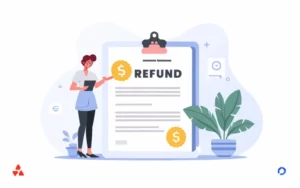When someone says, “I will get back to you,” it often leaves you in a limbo of uncertainty. Whether in a professional setting, personal conversation, or casual chat, knowing how to respond can keep the momentum going and even steer the conversation in your favor.
In this article, we present 30 top-tier replies that will help you handle this phrase with confidence, wit, and clarity.
Each response is designed to fit different contexts, ensuring you’re prepared no matter the situation.
These replies aren’t just about filling the silence—they’re about maintaining control, showing your professionalism, and sometimes even injecting a bit of humor. Let’s dive into our carefully curated list.
Reply with Polite Persistence
To keep the conversation active while respecting their timeline, use a polite yet persistent response.
Explanation:
This approach demonstrates your eagerness while remaining respectful of their time. It subtly nudges them to respond without being pushy.
For Example:
I look forward to your response—please let me know if there’s anything else you need from me.
Show Understanding with a Friendly Nudge
Express understanding while gently reminding them of your need for a follow-up.
Explanation:
This response shows empathy for their situation while gently reminding them that you’re awaiting their response. It’s a tactful way to keep the conversation going.
For Example:
I appreciate you getting back to me when you can. Just a quick reminder about the update.
Confirm Next Steps Clearly
Clarify the next steps and express your eagerness to move forward.
Explanation:
By outlining the next steps, you make it clear what actions are expected, which can help expedite the process and keep things organized.
For Example:
Once you’ve had a chance to review, could you let me know the next steps?
Add a Touch of Humor
Use light humor to ease the tension and keep the conversation engaging.
Explanation:
Humor can help lighten the mood and make your follow-up request feel less formal and more friendly, potentially making the recipient more inclined to respond.
For Example:
I’ll be here eagerly awaiting your reply—try not to keep me in suspense too long!
Reiterate Your Interest
Reaffirm your interest or commitment to the subject at hand.
Explanation:
Reiterating your interest shows that you’re still invested and keen on the outcome, which can help keep the conversation relevant and important.
For Example:
I’m really interested in your feedback. Looking forward to hearing from you soon!
Acknowledge Their Time Constraints
Show empathy for their busy schedule while still expressing your need for a follow-up.
Explanation:
Acknowledging their busy schedule demonstrates respect for their time, which can help maintain a positive tone in the conversation.
For Example:
I understand you’re busy. Whenever you get a chance, I’d love to hear back from you.
Be Proactive About Timing
Offer a suggestion for when you’ll follow up, keeping the initiative in your court.
Explanation:
Proactively suggesting a follow-up time helps set expectations and keeps the conversation moving forward on your terms.
For Example:
I’ll check back in a week if I don’t hear from you. Let me know if that works for you.
Express Willingness to Help
Offer your assistance to move the process along.
Explanation:
Showing your willingness to help can facilitate a quicker response by demonstrating your proactive attitude and readiness to assist.
For Example:
If there’s anything I can do to assist you in making a decision, please let me know.
Highlight the Importance
Emphasize the importance of the matter to reinforce urgency.
Explanation:
By stressing the importance, you underscore why a timely response is crucial, potentially prompting a quicker follow-up.
For Example:
This matter is quite important to me, so I would appreciate any updates as soon as possible.
Be Direct Yet Courteous
Use a straightforward approach while maintaining politeness.
Explanation:
A direct yet courteous reply helps you get straight to the point without coming across as demanding or aggressive.
For Example:
Could you please provide an update at your earliest convenience? Thank you!
Offer a Specific Follow-Up Date
Suggest a specific date to touch base again.
Explanation:
Proposing a specific follow-up date helps set clear expectations and can facilitate a more structured response.
For Example:
I’ll reach out again on Friday if I don’t hear from you before then. Thanks!
Reaffirm Your Availability
Ensure they know you’re available for any further questions or information.
Explanation:
Reaffirming your availability shows that you’re ready to provide additional details if needed, keeping the lines of communication open.
For Example:
I’m available for any questions you might have, so please don’t hesitate to reach out.
Use a Polite Reminder
Send a polite reminder if they haven’t responded within a reasonable time.
Explanation:
A polite reminder helps jog their memory without coming across as pushy or impatient.
For Example:
Just following up to see if there’s any update on our previous conversation. Thank you!
Add a Personal Touch
Include a personal touch to make your response more engaging.
Explanation:
Personal touches can make your response feel more genuine and less formulaic, which can help in building rapport.
For Example:
I hope you’re doing well! Just checking in to see if you have any updates for me.
Show Appreciation for Their Effort
Acknowledge the effort they’re making to get back to you.
Explanation:
Showing appreciation can foster goodwill and make them more inclined to prioritize your request.
For Example:
Thanks for taking the time to get back to me. I’m looking forward to your response.
Express Understanding of Their Decision-Making Process
Acknowledge that they may need time to make a decision.
Explanation:
By understanding their decision-making process, you show patience and respect, which can enhance your professional relationship.
For Example:
I understand these things take time. I’m here if you need any additional information.
Keep It Short and Sweet
Sometimes, a brief and to-the-point response is best.
Explanation:
A concise reply can be effective in professional settings where brevity is valued.
For Example:
Looking forward to your update. Thanks!
Use a Professional Tone
Maintain a professional tone to ensure your response is appropriate for formal contexts.
Explanation:
A professional tone helps in maintaining formality and respect, which is important in business and formal interactions.
For Example:
I would appreciate an update on this matter when you have a moment. Thank you.
Inquire About a Timeline
Ask if they can provide an estimated timeline for their response.
Explanation:
Requesting a timeline helps you manage your expectations and plan your follow-up actions accordingly.
For Example:
Could you provide an estimated timeline for when I might expect a response? Thanks!
Reconfirm Previous Details
Reiterate key details from the previous conversation to remind them of the context.
Explanation:
Reconfirming previous details can help refresh their memory and ensure they address the right points in their response.
For Example:
Just to recap, we were discussing [specific detail]. Looking forward to your update.
Express Excitement for Their Response
Show enthusiasm about their upcoming reply.
Explanation:
Expressing excitement can create a positive and engaging atmosphere, making them more inclined to respond favorably.
For Example:
I’m excited to hear your thoughts on this. Can’t wait for your response!
Offer to Discuss Further
Suggest setting up a meeting or call if needed.
Explanation:
Offering to discuss further shows your willingness to engage more deeply, which can facilitate a quicker and more detailed response.
For Example:
If you prefer, we can discuss this over a call. Let me know what works for you.
Acknowledge Their Previous Input
Reference any previous input they’ve given to show you’re attentive.
Explanation:
Acknowledging their previous input demonstrates that you value their contribution and are attentive to details.
For Example:
Thank you for your previous input. I’m eager to see how we can move forward from here.
Ask for Clarification if Needed
If their initial message was unclear, politely ask for clarification.
Explanation:
Requesting clarification can help ensure you have all the necessary information to proceed effectively.
For Example:
Could you clarify [specific point]? I want to make sure I understand correctly.
Reiterate Your Availability for Follow-Up
Reaffirm that you’re available for any additional information they might need.
Explanation:
Reiterating your availability helps keep the communication open and shows your readiness to assist further.
For Example:
Feel free to reach out if you need any more information from my end.
Include a Call to Action
Encourage them to take the next step in the process.
Explanation:
Including a call to action can help prompt a response by clearly indicating what you’d like them to do next.
For Example:
Please let me know if there’s anything specific you need from me to proceed.
Reaffirm the Deadline if Applicable
If there’s a deadline, remind them of it in a respectful manner.
Explanation:
Reminding them of a deadline helps ensure they’re aware of any time constraints associated with your request.
For Example:
Just a quick reminder that we’re aiming to finalize this by [deadline]. Thanks!
Use a Gentle Reminder
Send a gentle reminder if you haven’t heard back within a reasonable timeframe.
Explanation:
A gentle reminder can help prompt a response without seeming pushy or impatient.
For Example:
I hope all is well. Just checking in to see if you’ve had a chance to review my previous message.
Show Flexibility
Express your willingness to accommodate their schedule.
Explanation:
Showing flexibility can help in maintaining a positive tone and making it easier for them to respond on their own terms.
For Example:
I’m flexible with timing, so let me know when you’re ready to discuss this further.
Reaffirm the Importance of the Discussion
Emphasize why the discussion or response is important to you.
Explanation:
Reaffirming the importance can help highlight the urgency or significance of the matter, prompting a quicker response.
For Example:
This topic is quite important to me, so your timely feedback would be greatly appreciated.
Ask for an Update on Status
Request an update on the status of your previous inquiry.
Explanation:
Asking for a status update can help clarify where things stand and what actions are needed next.
For Example:
Could you provide an update on the status of our discussion? Thank you!
Show Appreciation in Advance
Express gratitude in advance for their forthcoming response.
Explanation:
Showing appreciation in advance can create a positive tone and encourage a prompt reply.
For Example:
Thank you in advance for getting back to me. I’m looking forward to your response.
Be Direct About Your Needs
Clearly state what you need from them to move forward.
Explanation:
Being direct about your needs helps ensure there’s no ambiguity about what you’re requesting, which can facilitate a quicker response.
For Example:
Please let me know if you need any additional information to proceed with my request.

Matthew Porter is the visionary behind ReplySwift.com. With a talent for crafting concise and impactful responses, Matthew helps others communicate with clarity and confidence. On ReplySwift.com, he provides expert advice, practical templates, and valuable insights to enhance every reply. Join Matthew and transform your communication skills to make each response swift and effective.












